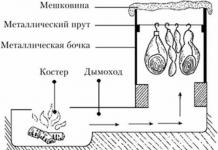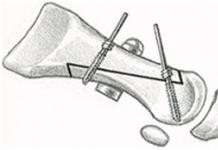Have you ever seen large, healthy tulips in amateur gardens? Probably very, very rare. Although these joyful and bright first spring flowers are loved by everyone. With enthusiasm, people buy bulbs and plant them in their gardens in the hope that now they will certainly admire luxurious flowers every spring. Indeed, tulips differ from other bulbous ones, such as daffodils and hyacinths, in that they feel great in central Russia. But over the years, and sometimes the very next year after planting, the bulbs become smaller, and then completely disappear. It must have happened to you too. There are many reasons for this. Let's try to figure out the most common mistakes in growing tulips.
IMMEDIATELY, such a gross violation of technology as non-annual digging of bulbs should be excluded. To better understand what's going on here, let's take a quick look at the morphology and biology of this plant. You buy bulbs in August - September. By this time, a flower bud is already fully formed in a large bulb. It is located in the center of the bulb at the top of the bottom. It is densely surrounded by 4-5 juicy, white scales, also sitting on the bottom. The structure of the bulb will be clearly visible if you cut it in half lengthwise. But it is usually a pity to ruin a tulip, so do the same with a regular bulb onion- their structure is similar.
Bulb
The tulip bulb on the outside is dressed in dense brown scales. And under it are juicy scales containing a reserve nutrients, sufficient to drive out the stem with leaves and bloom. This is the basis for forcing (receiving flowers) of bulbous plants in winter and spring. The tulip bulb is an annual, although the plant itself is considered a perennial. The fact is that buds are laid between the scales of the bulb, which develop during the growth of the stem and flowering, and by the end of the growing season turn into new bulbs, in the amount of 1-5 pieces. They sit in the nest, dressed in the shell of a completely depleted mother bulb. The largest of these new bulbs is called a substitute, and the others are smaller - bulbs of the second or third analysis, even smaller - children.
If the nest of new bulbs remains in the ground, then they will lack everything - food, water, air. This is the same as unthinned seedlings of other crops - they will never grow full-fledged plants. But the tulip is all hypertrophied. I'll explain why.
The tulip is an ephemeroid with a very short growing season. After all, we plant the bulbs at the end of September, in October they take root (the roots grow up to 20 cm), bloom in May, and in June the aerial part of them already dries up. And during these four months, the bulb must take root in such a way as to endure the winter frosts, form a stem with leaves and a flower or flowers in the spring, and also give a whole nest of new bulbs, moreover, replacing good conditions not inferior in size to the mother bulb, and often exceeds it. Now we can conclude that, leaving the tulips undigged, it will no longer be possible to restore their original qualities.
In addition to annual digging, tulips, for the same reasons, need major preparation of the planting site. The plant must have enough nutrition to go through such a rapid cycle of development and growth. Along with the quality of planting material, it is the preparation of the land that will determine the success of the crop. The site must be selected on a warm slope or flat surface, in the sun or in light partial shade (scattered shade of trees), groundwater should not be closer than 60 cm from the surface. Tulips love medium or light loamy soil, with a neutral reaction, very high fertility and cultivated to a depth of at least 35 cm. In Holland, the legislator of bulbous crops, up to 50 kg of manure per 1 m2 is applied under tulips before they are planted, under the predecessor. This dose is recommended for lean lands, and on average 25 kg of organic fertilizers are required. It is not recommended to plant tulips on heavy, clay soils and in damp places.
The land is prepared in the spring of the year of planting or in the autumn of the previous year. In addition to organic fertilizers (it can also be humus or compost), lime is added - 200-400 g and simple superphosphate - 100 g per 1 m2. Double digging is used, with half of the fertilizers and all superphosphate mixed with the lower layer of the earth, and the second half with the upper one. Sand is added to heavy lands - up to 20 kg per 1 m2. In summer, the site can be occupied with annual flowers or green vegetables, but it must be vacated a month before planting, at the end of August. Dig up, having previously scattered potassium magnesia - 100 g per 1 m2.
The best time for planting tulips in central Russia is from September 20 to 30. It is important to maintain the planting depth - there are two more heights of the bulb above the bulb. For large ones, it will be 10-12 cm from the bottom. And the distance between the bulbs is at least two of their diameters - 7-8 cm. Small bulbs and a baby are planted smaller and denser. Sand is poured under the bottom with a layer of 3 cm, and the bulb with its head is covered with it, so that there are fewer fungal diseases.
Landing
Inspect the bulbs carefully before planting. Their skin should be clean, without spots, and the bulb itself should be hard and heavy. Remove the skin from suspicious ones and, if there are spots on the white surface, destroy the bulb. For prevention, treat healthy bulbs with 0.2% foundationazole for 30 minutes, dry and plant.
To get large flowers, extra bulbs are usually planted with a diameter of more than 4 cm and the 1st parsing, with a diameter of 3.6-4 cm - for the Darwin Hybrids class, for other classes, including Lily, Terry, Fringed, Parrot, bulbs smaller in nature.
Care
Planting care is also important, although with good land preparation it is insignificant. If the autumn is dry, then the plantings must be watered, moreover, so that the moisture soaks the ground to a depth of roots - 35 cm. Then they are mulched with weathered peat with a layer of 3 cm. In mid-October, 15 g of ammonium nitrate per 1 m2 are added for better root growth. With the onset of frost, they cover with spruce branches - from mice and in case of a little snowy winter. Bulbs in autumn not only take root, but also form a sprout that almost reaches the surface of the earth. That is why in the spring so early, almost directly from under the snow, tubules of tulips appear. In severe winters, the flower bud can be damaged.
In the spring, the spruce branches are removed and the plantings are immediately fed with ammonium nitrate in the same dose as in the fall. After 10 days, they are fed again with the same saltpeter with the addition of potassium sulfate - 20 g, and after another two weeks - with one potassium sulfate, also 20 g per 1 m2. Tulips are also given 3-4 deep waterings, and they are watered until the aerial part begins to turn yellow, about two weeks after the end of flowering. It is at this time that the growth of new bulbs continues. Faded flowers must be pinched off. This technique is called decapitation. For a bouquet, tulips are cut with one or two leaves, otherwise good bulbs will not work.
Dig up the bulbs at the time of yellowing of the aerial part, without waiting for complete drying. Otherwise, the nest will crumble and some of the bulbs will remain in the ground. These bulbs will go deeper into the ground every year, it will be difficult to dig them out. The dug out bulbs are dried under a shed or in a barn for 3-4 days, then cleaned and stored in a well-ventilated area (for example, in the attic) at a temperature of 20 C until mid-August, and then at 17 C until planting, constantly monitoring their condition.
12/16/17 Nadezhda Galynskaya

This year my tulips are sick. During germination, many plants give twisted shoots, the leaves turn yellow and die. And the buds dry up.
- This is a common disease caused by the fungus botrytis, which affects most varieties of tulips. When the bulb is affected, the stem and peduncle are twisted, turn yellow, the buds dry out, and the bulb rots in the soil. On the affected leaves and stems, sporulation is formed, and the spores infect the buds and flowers of healthy tulips. Then the infection can penetrate into young bulbs (especially at high humidity). Therefore, sick twisted tulips and affected flowers are cut off and removed from the site. The plants are then sprayed with copper-containing fungicides or topsin. After digging and before planting, the bulbs are carefully examined and those affected by rot and with spots are discarded. Before planting shed the soil in the grooves Bordeaux mixture or topsin.
Tulips, twisted peduncles
- Some tulips came out with weak twisted peduncles, while others had only one leaf without a peduncle. Maybe this is a viral disease and all the bulbs should be destroyed.
- Tulips are slightly frozen: sometimes this happens with them during a snowless winter. Care for tulips as usual, be sure to feed with a complete complex fertilizer after flowering, then feed with potassium-phosphorus fertilizers until the leaves turn yellow.
04.11.13 Nadezhda Galynskaya
 From the first days of October, tulips, daffodils and other plants are planted for distillation. Hyacinths are planted at the end of the month. And in November it is not too late to do this, but early varieties are chosen.
From the first days of October, tulips, daffodils and other plants are planted for distillation. Hyacinths are planted at the end of the month. And in November it is not too late to do this, but early varieties are chosen.
Use only perfectly healthy and largebulbs of the first analysis. Boxes or pots with a depth of at least 10 cm and any neutral substrate are suitable for planting: loose soil, non-acidic peat, river sand, sawdust, and even better a mixture of them. Lime is added to acid peat and sawdust at the rate of 100 g per bucket, and to fresh sawdust - 10 g of ammonium sulfate per bucket.
 The distance between the bulbs is 1-1.5 cm, or planted close. It is easier to care when there is only one variety in each container. Then the flowering in the flowerpot comes at the same time.
The distance between the bulbs is 1-1.5 cm, or planted close. It is easier to care when there is only one variety in each container. Then the flowering in the flowerpot comes at the same time.
The dark shell is removed from the tulip bulbs. The tops of the tulip bulbs should be level with the surface of the substrate.
Hyacinth bulbs are buried in the soil 1/2 or 2/3 of the part, and the top of the bulb should be at the level of the edges of the pot.
Plantings are watered and installed in a non-freezing room without daylight with an air temperature not higher than plus 9-10 degrees for 2 weeks. Humidity should be high, 75-80%. In the future, they are watered 1-2 times a week. Then containers with bulbs for distillation (tulips, daffodils, hyacinths, as well as small bulbs) are kept for 2-3 months at a temperature of 4-8 degrees.
Or pots with planted bulbs can be buried in the garden, covered with peat, sand, fallen leaves, and even put on the bottom shelf of a home refrigerator.
In different varieties and groups of tulips, rooting and germination lasts from 16 to 22 weeks, for daffodils 11-15 weeks.
Other garden plants are quite suitable for forcing - hosta, astilba, primrose, hellebore, anemone, lily of the valley, peony, lilies. Well-developed specimens of the listed plants, one or more, are planted in flowerpots with a clod of earth and kept until December - January in the basement. They are then taken to a room where, after about a month, new leaves will develop and flower stems will emerge.
04/25/11 Nadezhda Galynskaya
Tulips of early varieties are cut at the first sign of coloring of the bud, and late varieties - at full coloring of the bud. In order to form a full-fledged replacement bulb, when pruning the peduncle, 2-3 leaves are left from the ground.
Pruning of daffodil flowers can be started immediately after the cover leaf breaks and exposes the petals, but the length of the peduncle will be shorter. Peduncles break off or cut off at ground level without compromising the quality of the bulb.
Hyacinth inflorescences are cut with a very sharp knife at ground level at a time when two-thirds of the flowers have blossomed on the peduncle. Pruning hyacinth inflorescences slightly weakens the development of the bulb and the flower stalks on them will be weaker next year.
03/11/10 Nadezhda Galynskaya
 Tulip, leaves turn yellow, buds wither
Tulip, leaves turn yellow, buds wither
This year my tulips are sick. During germination, many plants give twisted shoots, the leaves turn yellow and die. And the buds dry up.
- This is a common disease caused by the fungus botrytis, which affects most varieties of tulips. When the bulb is affected, the stem and peduncle are twisted, turn yellow, the buds dry out, and the bulb rots in the soil. On the affected leaves and stems, sporulation is formed, and the spores infect the buds and flowers of healthy tulips. Then the infection can penetrate into young bulbs (especially at high humidity).
Therefore, sick twisted tulips and affected flowers are cut off and removed from the site. The plants are then sprayed with copper-containing fungicides or topsin.
After digging and before planting, the bulbs are carefully examined and those affected by rot and with spots are discarded. Before planting, shed the soil in the grooves with Bordeaux liquid or topsin.
03/11/10 Nadezhda Galynskaya
 - Some tulips came out with weak twisted peduncles, while others had only one leaf without a peduncle. Maybe this is a viral disease and destroy all the bulbs.
- Some tulips came out with weak twisted peduncles, while others had only one leaf without a peduncle. Maybe this is a viral disease and destroy all the bulbs.
- Tulips are slightly frozen: sometimes this happens with them during a snowless winter. Care for tulips as usual, be sure to feed with a complete complex fertilizer after flowering, then feed with potassium-phosphorus fertilizers until the leaves turn yellow.
24.11.09 Nadezhda Galynskaya

Plants accompany a person in all cases of life. And special attention was paid to beautiful flowers. Ancient cultural monuments testify that at the dawn of history, people used flowers for various purposes: in some cases, as medicinal plants, in others for aesthetic pleasure (irises, lilies of the valley, chamomile, violets).
Flowers are depicted on the coats of arms of new cities and countries on banknotes and on the canvases of painters around the world.

Very often in ancient manuscripts, documents and cultural monuments we meet tulip flower. The oldest mention of it is found in the old Persian fables of the 11th century. Tulips were first cultivated in Persia. It is believed that their name comes from the Persian word tuli ban - turban, and was given to him for the similarity of a flower with an oriental headdress. Breeding varieties and selection of these bulbous plants first began to be engaged in Turkey. Where even now colorful tulip carnivals are held annually in cities.

Researchers believe that Europe tulips were brought in 1554 from Constantinople by an Austrian diplomat and transferred to the Vienna Garden medicinal plants. And tulips get to Holland only after 15 years. The climatic and soil conditions of the country turned out to be very favorable for them. At the beginning of the 17th century, the cultivation of tulips became a fashionable hobby and served as one of the confirmation of the strength of the social position, since only very wealthy people could afford this expensive occupation at that time. Over the years, it took on such a scale that it went down in history under the name “tulip mania”. The hype reached its cycle in 1634-1637, when prices for new varieties amounted to fabulous sums.
Bulbs of rare varieties were equated by weight to the cost of precious metals. In 1637, the Dutch government issues a decree to set fixed prices for tulip bulbs. This stopped flower speculation. In Amsterdam, tourists and today guides show big house in the city center, which was bought for only 3 bulbs, as evidenced by the bill of sale that has survived to this day.
 The tulip flower in the 17th century became the trademark of many entrepreneurs. Today, you can also find his image on the letterheads of Holland.
The tulip flower in the 17th century became the trademark of many entrepreneurs. Today, you can also find his image on the letterheads of Holland.
In the Netherlands, there is a park created in 1949 where tulips are grown, collected and presented to visitors. In this park, Rubens created a portrait of his wife against the backdrop of live tulips. There probably isn't a garden like this anywhere else.  The passion for tulips has not bypassed France. During the reign of Louis 14, the costumes of the courtiers were decorated with tulips of the most expensive varieties. Jewelry imitating the shape of a flower was made. Crockery, decorative vases, cabinetry, iron casting of palace fences - everything is made in the form of this beautiful flower.
The passion for tulips has not bypassed France. During the reign of Louis 14, the costumes of the courtiers were decorated with tulips of the most expensive varieties. Jewelry imitating the shape of a flower was made. Crockery, decorative vases, cabinetry, iron casting of palace fences - everything is made in the form of this beautiful flower.

Tulips came to Russia from Holland at the beginning of the 17th century. They were available only to wealthy people. At the end of the 19th century, the industrial cultivation of these bulbs began on the coast of the Caucasus.
Over time, violent passions subsided, but interest in this culture does not fade away. Now in our country tulips are a popular spring culture. And thanks to collectors, some ancient varieties have survived to this day. 
11.04.09 Nadezhda Galynskaya
 Finding a wild-growing forest tulip in Belarus caused surprise among botanists, and only a thorough study of the history of the settlement of this wonderful plant in Central and Eastern Europe explained this almost incredible fact. Bulbous has attracted the attention of man since ancient times. They served him as a source of food, medicinal substances and ... poisons. Apparently, it was for these purposes that they began to breed. However, no less attracted people and the amazing beauty of these plants. The tulip was especially popular. Poems and myths were dedicated to him, immortalized in bas-reliefs and frescoes, depicted in the ornaments of oriental carpets and robes. In ancient times, large-flowered tulips were not yet known to Europe. The era of great geographical discoveries turned everything upside down: a stream of new plants poured onto the continent. Fashion for one was replaced by a craze for another. And tulips also came into fashion. Suffice it to recall the "tulip mania" that swept Holland in the middle of the 17th century, and then Europe. The birthplace of the forest tulip is the broad-leaved forests of southern Italy and the Balkan Peninsula. It came to Central Europe during the period of the medieval knightly cult of tulips, when various types of tulips began to be bred everywhere and new varieties were bred, especially seeking to obtain the so-called “black tulip”. It was introduced into cultivation in 1568. Widely used in breeding. This species turned out to be very unpretentious and runs wild easily. From the places of cultivation, he settled along the river valleys, where he found suitable conditions for himself in broad-leaved (oak, beech) forests with rich humus soil. Later, from Central Europe, it came along with planting material of introduced trees and shrubs to some places in Eastern Europe, where it also naturalized well.
Finding a wild-growing forest tulip in Belarus caused surprise among botanists, and only a thorough study of the history of the settlement of this wonderful plant in Central and Eastern Europe explained this almost incredible fact. Bulbous has attracted the attention of man since ancient times. They served him as a source of food, medicinal substances and ... poisons. Apparently, it was for these purposes that they began to breed. However, no less attracted people and the amazing beauty of these plants. The tulip was especially popular. Poems and myths were dedicated to him, immortalized in bas-reliefs and frescoes, depicted in the ornaments of oriental carpets and robes. In ancient times, large-flowered tulips were not yet known to Europe. The era of great geographical discoveries turned everything upside down: a stream of new plants poured onto the continent. Fashion for one was replaced by a craze for another. And tulips also came into fashion. Suffice it to recall the "tulip mania" that swept Holland in the middle of the 17th century, and then Europe. The birthplace of the forest tulip is the broad-leaved forests of southern Italy and the Balkan Peninsula. It came to Central Europe during the period of the medieval knightly cult of tulips, when various types of tulips began to be bred everywhere and new varieties were bred, especially seeking to obtain the so-called “black tulip”. It was introduced into cultivation in 1568. Widely used in breeding. This species turned out to be very unpretentious and runs wild easily. From the places of cultivation, he settled along the river valleys, where he found suitable conditions for himself in broad-leaved (oak, beech) forests with rich humus soil. Later, from Central Europe, it came along with planting material of introduced trees and shrubs to some places in Eastern Europe, where it also naturalized well.
 - a beautiful, elegant plant with fairly large, up to 6 cm, yellow pleasantly smelling, unlike garden forms, flowers. One thin erect peduncle comes out of the bulb, which ends with one or very rarely two flowers. Petals elongated, pointed. In the sun, the flower opens wide, and in cloudy weather and at night its petals are tightly closed. flowering plants there is little in the thickets, flower shoots are not formed every year and not in all specimens. In most plants, only leaves grow from bulbs. Each plant has 2 - 4 very narrow, grooved leaves, 20 - 25 cm long, 1 - 2 cm wide. Forest tulip is a cross-pollinated plant, anthers ripen before pistils, thereby preventing self-pollination. In the conditions of Belarus, it rarely blooms and reproduces mainly vegetatively, forming rather dense thickets in places of growth. The plant belongs to the spring ephemeroids - in the summer its leaves and peduncles dry out, small oblong bulbs covered with dense darkish scales remain in the soil. Each year, the mother bulb is replaced by a new one, in addition, long horizontal and vertical stolons are formed. Due to which, obviously, the development of new territories takes place.
- a beautiful, elegant plant with fairly large, up to 6 cm, yellow pleasantly smelling, unlike garden forms, flowers. One thin erect peduncle comes out of the bulb, which ends with one or very rarely two flowers. Petals elongated, pointed. In the sun, the flower opens wide, and in cloudy weather and at night its petals are tightly closed. flowering plants there is little in the thickets, flower shoots are not formed every year and not in all specimens. In most plants, only leaves grow from bulbs. Each plant has 2 - 4 very narrow, grooved leaves, 20 - 25 cm long, 1 - 2 cm wide. Forest tulip is a cross-pollinated plant, anthers ripen before pistils, thereby preventing self-pollination. In the conditions of Belarus, it rarely blooms and reproduces mainly vegetatively, forming rather dense thickets in places of growth. The plant belongs to the spring ephemeroids - in the summer its leaves and peduncles dry out, small oblong bulbs covered with dense darkish scales remain in the soil. Each year, the mother bulb is replaced by a new one, in addition, long horizontal and vertical stolons are formed. Due to which, obviously, the development of new territories takes place.
In Belarus, the forest tulip is known only in 2 places: in the vicinity of the village of Olshevo, Myadel district, where it naturalized in the valley of the Stracha River; and in the vicinity of the city of Brest (near the Brest Fortress) - in the valley of the Mukhavets River. Like many bulbous plants, the forest tulip, due to the presence of special retracting roots, is capable of self-deepening into the underlying horizons of moist, loose soils. This interesting biological adaptation serves to regulate the age composition and rejuvenate the natural thickets of the forest tulip, and, consequently, for its more active settlement due to vigorous vegetative reproduction. The self-deepening of the bulbs and the rejuvenation of the thickets is also the reason that the forest tulip blooms extremely rarely in the conditions of Belarus. This, to some extent, saves him from complete extermination. However, many plants die due to the careless attitude of ignorant people to everything that surrounds them.
The forest tulip, having high decorative qualities, deserves its wider introduction into culture. It is especially suitable for growing in shady areas of parks and squares in cities and towns. It is tested on protected plant sites in the Central Botanical Garden of the National Academy of Sciences of Belarus. In order to achieve stable flowering in the culture, it is necessary, as experiments have shown, to dig out the largest bulbs in the summer, dry them and plant them in late autumn at a shallow depth in well-fertilized loose soil.
If the tulip buds turned out to be “blind” - pale, yellowish - there can be many reasons. Most likely, you chose the wrong varieties for this forcing period or dug up the bulbs at the wrong time. For example, the bulbs of early-flowering varieties were dug up late, and put on the distillation early, and vice versa.
The formation of "blind" buds is promoted by too high a temperature during distillation. Or maybe you did not observe the temperature regime of storage and rooting of the bulbs, did not withstand the cooling periods. Also, the reason may be that there were cut flowers, fruits or vegetables near the place of storage and rooting of tulips.
If tulip flower stalks appear, but they are squeezed by the upper leaves, and the flowers are hanging and watery spots are visible throughout the plant, it means that there was not enough calcium in the soil when growing the bulbs. Or you took sour peat for distillation, and even at a high temperature.
What diseases do tulips have and what are their causes?
If the bulb is covered with a coating similar to calcareous, then this is a calcareous disease. The reason for its occurrence is the incomplete ripening of the bulbs and improper storage and drying conditions.
If small vitreous spots appear on the bulbs, which then acquire a bluish tint (blue on the bulbs), it means that in April-May they had too much light.
The bulbs secrete a yellowish sticky liquid - this is gommosis, which occurs from an excess of moisture in the soil at the end of the growing season.
Excess moisture at the end of the growing season and exposure to direct sunlight when digging lead to swelling of tulip bulbs - brown swells on the outer scales.
If during storage it was very humid and the air stagnated, a brown crust and wrinkling appear on the bulbs - this is a crusting disease.
If the tulip bulbs, suspended for distillation, gave only one leaf, and the peduncle did not appear at all, it means that you selected too small and young or light and non-round bulbs for forcing, which either did not have a flower bud at all, or it was underdeveloped.
If tulips bloom, but on weak, thin, elongated peduncles, it means that the air temperature in the room where the flowers are forcing is too high. Check if it is above +20°C on sunny days and it is also too warm at night. Maybe the plants are not getting enough light.
Why are tulips shrinking?
Once a flower garden pleased you with huge flaming tulips, but now only small flowers grow? This means that you are inattentive to them and, apparently, pay attention to these beauties only during their flowering.
In vain, tulips need to be taken care of constantly. Find out what causes grinding - improper care, viral diseases, your forgetfulness or inaccuracy?
Most often, tulips become smaller because they have not been dug for several years. After all, there are more and more bulbs in the ground, they lack nutrition, and the flowers begin to degenerate.
Tulips become smaller when they are affected by some viral or fungal diseases; this is also caused by poor drying and improper storage, too early or too late digging.
You also need to plant tulip bulbs on time, at the correct depth, in moist, mulched soil. In this case, they have both large flowers and fairly developed replacement bulbs.
And the last. Don't cut the tulip too low, leave the stem for the bulb to develop the leaves. When planting bulbs, carefully inspect the tubers and consider their age.
January is the time to wake up forcing plants. Making a plant bloom ahead of time is at first glance simple, but at the same time problematic. Those who were engaged in distillation must have encountered failure: asking themselves why the tulips did not bloom, why the buds froze and did not bloom, the leaves turn yellow and wither ...
Surely, when preparing tulips for forcing, you did everything according to the rules:
- We chose large, healthy, dense bulbs;
- For planting, a high-quality moisture-intensive and breathable substrate was prepared, drainage was laid on the bottom of the pot;
- A pot with planted bulbs was placed in a dark, cool place. Maintain moderate soil moisture;
- As soon as sprouts appeared (4-6 cm high), the pots were brought into a warm and bright room (temperature + 10-12 ° C), with high humidity (70-80%).
- Inspect the bulbs, they may be too small and do not have a flower bud;
- Maybe at the beginning of the forcing the temperature was too high, or the earth in the pot was not wet;
- If the bulbs were not sufficiently cooled before planting, you will not see full-fledged flowers. It is necessary to create a long artificial winter (depending on the variety from 16 to 22 weeks);
- Premature rise in temperature and access to light. And also the high temperature at the beginning of forcing leads to the deformation of the flower.
- With insufficient and belated watering, the plant stops growing, the buds do not open;
- The leaves turn yellow from drafts and poor lighting;
- Peduncles break - lack of calcium in the soil.
If you want to peduncle appeared earlier leaves - put pots with sprouted sprouts in a room with a sufficiently high air temperature. Cover the sprouts with inverted pots or a paper cover (about two weeks). As soon as the flower arrow appears, remove the shelter.
To get strong and long stems - as soon as you bring the plants into the forcing room, the temperature should be + 12-14 ° C (the first week), the lighting is weak. As soon as the bud hatches, raise the temperature to + 18-20 degrees, give full lighting.
When the tulips have finished blooming, cut off the flower heads and continue to water and feed the potted bulbs. So, as during forcing, they were very depleted. When the leaves turn yellow and wither, remove the bulbs from the soil, dry them first at a temperature of +24 ° C, then lower the temperature to + 17-19 ° C, and keep the bulbs in a cool room until planting in the ground. Plant out in the garden in the fall.
Timely and proper care of plants allows you to get high-quality flowers and tulip bulbs, but you should not forget about the health of plants. To do this, it is important to learn how to recognize diseases, know how to deal with them, and, more importantly, be able to prevent these diseases. Preventive measures to protect tulips include the following:
Choosing a site for tulips that meets the requirements of this plant;
- thorough preparation of the soil before planting;
- application of organic fertilizers only under the previous crop and within the required norms;
- timely feeding mineral fertilizers with strict observance of the dosage, especially nitrogen fertilizers, the excess of which helps to reduce the resistance of plants to diseases;
- strict observance of the crop rotation - tulips should be grown in the same place no more than once every 4-5 years. Soil disinfection gives good results;
- careful selection and culling of diseased and suspicious bulbs, planting only healthy planting material;
- observance of the required depth and density of planting bulbs;
- timely carrying out of care activities, maintaining a good sanitary condition and cleanliness of the tulip collection;
- timely cleaning of bulbs, drying with good ventilation;
- mechanical damage to the bulbs is unacceptable, it is necessary to cull the damaged bulbs;
- use of disinfected containers for storing bulbs and tools for cutting flowers;
- removal and destruction of diseased plants along with roots and leaves.
Of course, the above measures do not give an absolute guarantee that tulips will not get sick, but compliance with these measures will significantly reduce the degree of damage to plants by diseases, the zone of their distribution will be reduced and the loss of bulb yield will decrease.
Tulips, like any other ornamental plants, are damaged by a large amount of various diseases and have numerous pests. Within our country, more than 30 fungal, viral and bacterial diseases of tulips are known, but many of them are quite rare. The greatest harm to tulips is caused by such fungal diseases as gray rot, fusarium, sclerocial rot. Of the viral diseases, variegation is the most dangerous. Non-communicable diseases do not pose a serious danger and arise as a result of adverse external conditions.
Fungal diseases of tulips
Gray rot(pathogen - Botrytis tulipae) is most pronounced in rainy and cool weather, which contributes to the rapid spread of the fungus. The disease spreads very quickly, which is why it is often called a "fire". Tulips planted on heavy soils are especially affected. Gray rot affects all above-ground parts of the plant (leaves, stems, flowers and buds), as well as bulbs. Moreover, the bulbs are affected both during the growing season and during storage. Usually planted diseased bulbs or soil serve as a source of infection. On the affected parts of the plant, yellowish-gray depressed spots of various sizes and shapes appear. In a humid environment, the spots increase rapidly in size, and they are quickly covered with a gray coating of fungal spores. The tissues of a diseased plant dry up, gradually soften and become ash-gray, it seems that the plant is burned - hence another name - “tulip burn”. The stem of a diseased plant is bent, the buds do not develop, and if flowers are formed, they are deformed, ugly in shape. The growing season of diseased plants is significantly reduced, so the bulbs do not have time to grow to normal size and gradually shrink.
Affected bulbs have yellow-brown spots in a reddish halo on the outer scales. During storage, the affected bulbs soften, darken and shrivel. Sometimes with gray rot, cracking of the bottom of the bulb is observed from the center to the edges. Black sclerotia of the fungus appear on the surface of the covering scales of diseased bulbs, which become a new source of infection. If the tulip is severely affected by rot, the bulb rots during storage, and if it is weak, the disease in the form of spotting may go unnoticed, and the bulb is planted in the soil. In the spring, such a bulb will give a weakened, twisted shoot, which will gradually become brown, covered with a gray bloom and die. The spores of the fungus from such a plant are carried by the wind and infect healthy plants. In the soil, the spores of the fungus remain viable for 4 years. Therefore, in the spring it is necessary to carefully examine the seedlings of tulips and destroy all diseased and suspicious plants.
Gray rot can affect tulips at all stages of development, but they become especially susceptible during the budding period. The incubation period under favorable conditions is 1-3 days. The spread of the disease is facilitated by increased soil and air humidity, dense plantings, insufficient lighting, excess nitrogen in the soil and spring frosts. Gray mold affects almost all varieties of tulips, but not all of them are susceptible to the disease to the same extent. Usually early varieties suffer less from rot, having time to finish flowering before the maximum development of the disease. Of late flowering tulips, parrot tulips are relatively stable.
Control measures: to prevent damage to the bulbs by gray rot in large flower farms, they are dusted with a mixture of TMTD, sulfur and ether-sulfonal in a ratio of 2: 1: 1 at the rate of 8-10 g per 1 kg of bulbs. TMTD is also used in the form of a solution of 0.3-0.5% concentration for dressing the bulbs before planting for 30 minutes. However, it should be remembered that dressing protects the bulbs from soil infection for a short time. Therefore, during the growing season of tulips, to protect against secondary infection, it is necessary to spray the plants. The number of treatments depends on weather conditions, the degree of infection of the soil with the infection and the condition of the plantings. As a rule, 2-3 treatments are usually sufficient. For spraying use Bordeaux mixture 1% concentration or euporen 0.5-1% concentration, which is considered the most effective tool to combat gray mold. It is advisable to spray tulips three times: at the beginning of the growing season, during the budding period and after flowering.
As a result of many years of observations, flower growers noticed that the presence of sufficient potassium and magnesium in the soil reduces the incidence of gray rot, while improving the quality of the bulbs. And planting tulips in an area where bulbous plants have already grown increases the likelihood of disease by 4-10 times, compared with growing them in a new place. Those flower growers who try not to use chemical plant protection measures on their site can do without them. At the same time, it is important to comply with the entire range of agrotechnical measures, timely culling and destroying diseased and suspicious bulbs and plants, which will significantly reduce the degree of damage to tulips by gray rot. In addition, to improve the soil, it is recommended, after digging up the bulbs, to sow plants that produce phytoncides (calendula, marigolds, nasturtium, mustard, etc.) in the vacated area, followed by their autumn digging and embedding in the soil.
Root rot. Pathogen- mushrooms of the genus Ruthium, usually P.ultimum.
 Brown spots on roots caused by the fungus Pythium sp.
Brown spots on roots caused by the fungus Pythium sp.
In the early stages of the disease, the symptoms are reduced to partial decay of the root system, which, however, does not significantly affect the viability of the plants. Serious cases of infection lead to short stature of tulips, a decrease in the decorativeness of flowers, the roots become transparent, watery with brown streaks, break easily, later turn completely brown. Pathogen activity and disease risk increase with increasing soil moisture and soil temperatures above 0°C. Susceptibility to the disease depends on the variety.
Control measures
For cultivation in open ground, greenhouse, boxes use fresh soil.
The infected substrate is disinfected with a fungicide.
It is very important that the soil is well structured and drained.
Botrytis rot. Pathogen- mushroom Botrytis cinerea.This pathogen usually invades damaged or weakened plant tissues.
Infected bulbs become dark brown and soft. They form large dull black sclerotia. Infected tulips (the Dutch call them "spotted") become brittle and may break suddenly. The flowers of diseased plants are dull in color. Severely infected specimens lag behind in development or do not germinate at all. High humidity exacerbates the disease, which is spread by spores (conidia) and is more common on long-stored, late-planted bulbs. The use of fresh peat or steamed soil also contributes to the activation of pathogens, since these substrates do not contain natural antagonists of the pathogen.
Control measures:
A little (20%) coarse-grained sand or disinfected soil is always added to pure peat.
Before planting, the bulbs are treated with a fungicide, and then they are sprinkled with a layer of coarse sand.
Tulips are grown in open, well-ventilated areas.
Soft rot. The causative agent is some strains of the fungusPythium ultimate.From infected bulbs (they become pink, watery and secrete a characteristic bad smell as with Fusarium lesions) short shoots develop. Seedlings and roots look healthy at first, then rot. With a later (during cultivation) infection, the tips of the leaves turn yellow, the plants droop, the buds dry out just before flowering. Bulbs are usually affected in the first few weeks after planting, when the soil temperature is 12° and above.
 Soft rot on bulbs
Soft rot on bulbs
Photo from the Floriculture magazine - 2003 - No. 2
Control measures:
Same as root rot.
In addition, the bulbs are treated with a fungicide. In the first two weeks after planting the tulips, the temperature in the greenhouse is kept below 10-12°C.
White (sclerocial) rot. Pathogens - Scleritinia bulborum, Sclerotium tuliparium. There are several varieties of this disease. In one case, white rot affects the growth point and neck of the bulb, which are covered with a white felt coating, later turning brown. Sometimes the disease manifests itself in the form of weeping rot around the growing point of the bulb. Gradually, the rot covers the entire bulb, and it dies without giving a sprout. Since tulips affected by white rot die during the growing season, planting material cannot be a source of infection. Infection occurs through the soil, in which the spores of the fungus can remain viable for up to 5 years.
Acidic soils and high humidity are especially conducive to the spread of this disease. The first sign of infection of plants with white rot is uneven shoots in the spring. Affected bulbs usually do not germinate or produce very weak seedlings that gradually turn yellow and die. A characteristic sign of this rot is also the presence of a healthy root system in a diseased plant, which is not affected by the fungus. Watery spots appear on the shoots of affected plants, which turn bluish-gray.
Control measures: the soil, previously well-treated, is shed a month before planting the bulbs with a 2.5-3% solution (up to 6%) of carbation at the rate of 10 l / m 2. The soil treated with a 6% solution is watered. Sick bulbs, together with the aerial part of the plant, are removed with a clod of earth and destroyed. The place of excavation is sprinkled with ashes. To prevent this disease, it is also necessary to observe a cultural rotation and return tulips to their original place no earlier than after 5 years. Do not plant them after lilies, daffodils, irises and crocuses, also affected by this disease. If it is impossible to transplant tulips to a new place, the infected soil must be disinfected with a 1.5% formalin solution at the rate of 10 l / m 2. After processing, carried out at a positive temperature, the soil is tightly covered for 2-3 days. Formalin also disinfects tools, tools, boxes with which the infection can be spread.
Typhulosis- one of the varieties of sclerocial rot. Pathogen - Typhula bolealis. The first signs of the disease are reddish sprouts, non-unfolding leaves, growth retardation, emerging buds remain underdeveloped. Affected plants show yellowing of the roots, which then die off. The bottom of the bulb rots, and the plant dies completely. Typhulosis spreads especially strongly after warm winter and wet spring (low positive temperatures and humidity are favorable for the development of this disease). The source of infection is usually lightly infected bulbs that have fallen into storage and on the beds. The carriers of the disease are weeds on which the causative agent of the disease lives, as well as the soil that serves as a carrier of fungal spores.
Control measures: removal and destruction of affected plants, timely weeding and removal of weeds from the site, thorough inspection and culling of bulbs during storage and their dusting with chemicals before planting. The site, after digging up the tulips, must be dug deep with the turnover of the reservoir, since at great depths the spores of the fungus do not germinate and die over time (after 70-80 days). Bulbs dug out from the site where typhulosis was observed, it is desirable to pickle in a solution of 0.5% potassium permanganate. If chemical disinfection of the soil is carried out (1.5% formalin solution at the rate of 10 l / m 2), then deep digging can be abandoned.
Fusarium, or wet rot causes great damage to tulips. Pathogen - Fusarium oxysporum f. sp. tulipae. Most often, the disease manifests itself by the end of the growing season, the development of the disease is facilitated by an increase in air temperature to 20 ° C or more. Infection occurs through the bottom and roots, and in a young bulb through the covering scales. Plants with Fusarium bloom poorly, their peduncles are short and thin, size The roots of such tulips are poorly developed and have a yellowish-brown color.
 Fusarium infection
Fusarium infection
Photo from the Floriculture magazine - 2003 - No. 1
Fusarium can cause great damage during storage of the bulbs. During storage, bulbs affected by Fusarium rot, and during this period, large losses in the yield of bulbs are possible. Brown spots appear on the bottom of the infected bulb, clearly delimited along the edge by a red-brown line. Gradually, the spots darken, the rot penetrates the bulb, and it rots, releasing a sharp specific smell. Diseased bulbs in storage are a serious source of infection, and the disease can spread quickly as spores land on healthy bulbs. This is also facilitated by the temperature in the storage (above 25 ° C) and high humidity. Spores that have fallen on healthy bulbs during storage can cause their death already in storage or in the next growing season. The causative agent of Fusarium is highly resistant to adverse environmental conditions and remains viable for a long time. The greatest activity of the fungus is manifested at a temperature of about 25 ° C and air humidity over 90%. Tulips differ greatly in their resistance to Fusarium, but there are no varieties that are absolutely not affected by this disease.
Control measures: annual change of site and return to the previous one no earlier than in 5-6 years, timely digging of bulbs, thorough inspection of plantings and bulbs in storage and culling of diseased and suspicious bulbs. Highly effective in the fight against fusarium have drugs such as uzgen, fundazol and benlayt. 2-3 weeks before planting or immediately before, the bulbs are treated with a suspension of the drug (0.2-0.25%) for 30 minutes. In order for the drug to better adhere to the bulbs, you can apply dusting of pre-moistened bulbs.
Rhizoctonia disease. Pathogen- Rhizoctonia solani.The symptoms of this disease vary depending on the cultivation method. So, when grown in a greenhouse, orange-brown spots and stripes appear on the seedlings. Later, the affected tissue cracks, the ends of the lower leaves are folded back, but the flowers look healthy. With a more intense infection, the lower leaves and the underground part of the stem are damaged, on which oval, deeply depressed spots are formed. Such tulips are stunted and break off easily. When cultivating in boxes, after bringing them into the greenhouse, small brown-black spots and stripes are visible on the shoots. Despite the damage to the ends of the lower leaves, the plants bloom normally. Susceptibility to the disease depends on the variety. The fungus infects many agricultural and horticultural plants through the soil, including potatoes, lettuce, tomatoes, chrysanthemums, cereals. Therefore, infection can occur even if the previous crop was not tulips. The pathogen develops well at 15-18°. The disease is favored by high humidity and the acidic reaction of the substrate, thickened planting.
 Symptoms of infection with the fungus Rhizoctonia solani on the leaves
Symptoms of infection with the fungus Rhizoctonia solani on the leaves
Photo from the Floriculture magazine - 2003 - No. 2
Control measures:
The infected substrate is steamed, the soil bordering the greenhouse is treated with a fungicide, which is carefully mixed with the top (10 cm) layer.
Distillation boxes are washed and dried well.
With a 5-degree forcing technology, tulips are planted in such a way that the top of the bulbs remains above the substrate.
Plantings in boxes are mulched with coarse sand or fine gravel, without falling asleep on the tops of the bulbs.
Damaged leaves are removed.
Rhizoctonia. Pathogen- Rhizoctonia tuliparum.This fungus does not produce spores and usually infects bulbous plants at soil temperatures below 13°C. It spreads by contact-mechanical means, through planting material. With the constant cultivation of tulips in the same planting site, they can suffer greatly from the disease.
 Typical symptoms of rhizoctoniosis on the bulb
Typical symptoms of rhizoctoniosis on the bulb
Affected plants do not come out of the soil. They have a well-developed root system, but the infected seedling develops normally at first, but soon begins to rot. Sometimes the soil around the bulb and shoot is permeated with mycelium. Often it contains sclerotia, shape, color, the size of which varies greatly. On the scales of the bulbs appear large brown spots with gray mold. On a cross-section of a bulb, which usually rots, characteristic brown rings are visible. The focus of infection is usually well visible due to plants that are stunted and die prematurely. In heated greenhouses, at 20 °, the development of the disease stops.
Control measures:
Fresh substrate is used in boxes, it is updated in open ground.
Infected soil is steamed or treated with a fungicide.
Infected substrate is not stored near greenhouses.
Sick plants are destroyed.
Distillation boxes are cleaned, washed and dried well.
Planting material is treated with a fungicide.
Late planting bulbs significantly reduces the risk of disease.
Trichoderma. Pathogen- Trichoderma sp.This fungus is usually present in peat-based substrates. Infected roots become glassy, covered with fungal hyphae and rot over time. The ends of the leaves of diseased plants become light gray. At a later stage, the affected tissue turns white and quickly dries out. Tulips are more likely to get sick when forcing late in boxes with a pure peat substrate. Susceptible cultivars include 'Ad Rem', 'Angelique', 'Coriolanus', 'Kis Nelis', 'Pax", "Prominence", "Rosario", etc.
 Brown coloration of the roots caused by the fungus Trichoderma sp.
Brown coloration of the roots caused by the fungus Trichoderma sp.
Photo from the Floriculture magazine - 2003 - No. 2
Control measures:
Pure peat is always mixed with coarse sand or uncontaminated garden soil in equal proportions, fine-grained sand is poured into the bottom of the box with a layer of 1 cm.
In the rooms where rooting takes place, a high relative humidity (90-95%) is maintained so that the roots growing through the cracks of the boxes do not dry out.
Penicillosis appears on tulips during the growing season at high humidity, affects the bulbs, for a long time stored for spring forcing. Sick bulbs are covered with yellow-brown spots with a bluish bloom, plants lag behind in growth and form weak flower stalks. The death of the plant occurs only with a strong infection with the disease. This disease is not as harmful as sclerotial rot, it usually accompanies gray mold or other diseases of tulips. Infection of healthy bulbs with penicillosis is possible through mechanical damage in the scales and bottom.
Control measures: the main attention to prevent penicillosis should be paid to compliance with the rules for storing bulbs and creating optimal conditions for the growth and development of tulips during the growing season. If affected bulbs are found in storage, they should be pickled in a solution of potassium permanganate and dried.
Viral diseases of tulips
 The photo *
The photo *
variegation- the most common viral disease of tulips. This disease is as old as the history of the tulips themselves in Europe. Back in 1576, Professor Clusius noted the appearance of variegated banding in tulips. But long time the cause causing it was unknown and the sign of variegation was considered varietal. From the very beginning of the cultivation of tulips, varieties with variegated flowers were considered the most valuable, many flower growers sought to obtain such tulips. It is obvious that almost all tulips with variegated petals were infected with viruses, and only in some this trait was genetically fixed. Varieties with variegated or striped petals still exist today. And only in 1928 it was established that variegation is a disease of a viral nature. This virus not only changes the color of the flower, but also affects other decorative and biological features: infected plants are weaker, their flower stalk is shorter, and the weight of the bulbs also decreases. Such tulips will continue to bloom and grow for many, many years, but the variety gradually degenerates - the disease destroys the main characteristics inherent only to this variety. Such plants are no longer of value and should be discarded. Although even today there are lovers who like colorful tulips.
This disease is caused by the mosaic virus, or mottling. It affects only plants of the lily family. In diseased plants, the formation of a coloring pigment, anthocyanin, is disrupted. The virus changes the color of the flower, it becomes heterogeneous. Depending on the initial color of the variety, the virus on the flowers manifests itself differently. So, in pink, purple and lilac varieties, the color of the flower becomes heterogeneous: strokes appear on the edge of the petals on a white or yellow background, and in the middle of the petal there are asymmetrically arranged stripes against the background of the original color of the variety. Red, dark red and purple tulips have their own color intensified in the form of strokes and stripes of a darker color. In this case, it is much more difficult to distinguish viral plants. It is even more difficult to recognize the presence of the virus in white and yellow varieties, since hatching on such colors is not noticeable at all. But upon closer examination, one can detect symptoms of the disease: a decrease in flowers and the general habit of the plant, narrowing of the petals, especially in the lower part. Strokes and faint stripes of a pale green color sometimes appear on the stems and leaves. Near the stem, the petals do not touch each other, and gaps seem to form between them.
The variegation virus spreads with the juice of diseased plants, and various types of aphids, thrips, leafhoppers, bedbugs, whiteflies and other insects carry it. Since the mass appearance of these insects is observed in the second half of May, then the varieties of medium and late deadlines flowering. Early-flowering varieties, including varieties from the Kaufman, Foster and Greig classes, are also susceptible to this virus, but by the time aphids appear, the aerial part of these tulips has already died off, and infection of the bulbs becomes impossible. Often infection occurs as a result of mechanical damage and when cutting flowers - through cutting tools.
Control measures: there are no special pesticides to combat the variegation virus, so the only way to reduce the likelihood of tulip infection is to carry out preventive measures, namely: the removal and destruction of diseased plants along with the bulb, the infected plants are buried in deep pits and sprinkled with burnt lime. To prevent the disease in the vicinity of tulips, it is better not to plant lilies, on which the virus can be without visible signs of illness, and planting tulips after lilies is simply unacceptable. Another measure to prevent mottling is the thorough disinfection of tools for cutting flowers. In order to avoid the transfer of the variegation virus from diseased plants to healthy ones, one knife cannot be used to cut flowers and decapitate. Experienced flower growers usually use several dozen razor blades for cutting. After use, the cutting tool is disinfected with potassium permanganate, alcohol, soda solution or formalin, or simply boiled. The chance of transmitting the virus is further reduced if the flowers are broken off by hand. One of the preventive measures is the cultivation of large bulbs from the baby, since it is believed that in most varieties of tulips the baby is immune to the mottling virus. And since the main carriers of the virus are aphids, it is important to monitor their appearance on tulip plantings and fight them in a timely manner.
Control measures: removal and destruction of infected plants with a clod of earth. Timely destruction of weeds that can serve as a source of infection. The soil after diseased plants must be disinfected, and the land used for forcing must be steamed. After such treatment, the spores of the fungus die. And one of the main preventive measures is strict observance of cultural circulation. Even when planting absolutely healthy planting material in an area where diseased tulips have already grown, re-infection cannot be avoided.
Non-infectious diseases of tulips
Mostly, these diseases appear during forcing and are usually caused by adverse external conditions.
The appearance of "blind" buds most often occurs during forcing, but can also occur when growing tulips in open ground. When planting tulips too early, when the soil temperature is still quite high, the bulb actively starts to grow, but the roots develop poorly. This violation of the growth process leads to the appearance of "blind" buds. Another reason for the appearance of “blind” buds is bulbs that are sick with Fusarium. It has been established that bulbs infected with Fusarium emit ethylene, which has a detrimental effect on healthy bulbs and causes the appearance of “blind” buds. Planting diseased bulbs leads to the fact that healthy bulbs growing nearby do not bloom.
Control measures: compliance with the terms of planting and storage conditions of the bulbs, careful culling of tulips infected with Fusarium.
drooping peduncle also commonly observed during distillation. A glassy spot with droplets of moisture appears on the upper part of the stem. The tissue of the plant in this place is wrinkled, and the stem droops. Such a lesion may appear anywhere on the stem or on the leaves, but it usually appears in the upper, most actively growing part. This disease is associated with a deficiency of calcium in the tissues of the plant with too rapid growth of the tulip caused by high temperature. Calcium, in comparison with other elements, is much more slowly absorbed by the plant and transported by it for a longer time. More often, the disease manifests itself in plants dug out too early, the bulbs of which did not have time to ripen.
Control measures: maintaining correct temperature regime, containment during distillation of too active growth of tulips by lowering the temperature. In addition, it is useful during active growth to water the tulips with a 1.5% solution of calcium nitrate or apply fertilizers containing calcium before planting in the soil.
lime disease observed during bulb storage. The bulbs, as it were, are saturated with lime, while becoming hard and white. The disease manifests itself in the case of premature digging of tulips, when the bulbs have not yet matured, as well as at elevated temperature and humidity in the storage.
Control measures: compliance with the terms of digging bulbs, maintaining optimal storage conditions.
Gum treatment bulbs is caused by excessive sunlight. Plants become most sensitive to light at the end of April and in the first half of May. The disease often affects them during this period. Yellowish and bluish-brown spots appear on the storage scales of the bulbs, from which a colorless liquid begins to ooze, forming sagging when dried. Such bulbs are not carriers of infection and are quite healthy, normal plants grow from them. However, disease spots can become a site for pathogens to enter the bulb and cause the plant to become infected with another disease.
Control measures: timely digging of bulbs, shading them when harvesting to avoid sunburn. Pickling bulbs in a solution of potassium permanganate. Maintaining optimal storage conditions.
Pests
Root onion mite- most dangerous pest, damaging not only tulips, but also many other types of bulbous and bulbous plants. This insect is less than 1 mm long, light yellow in color, shiny. The tick penetrates between the scales of the bulb, bites into its tissues, while the bulb quickly rots and may no longer germinate. If the bulb nevertheless germinates, then it gives a stunted weakened plant, an escape. During the growing season, the growth of such tulips is delayed, they turn yellow, the quality of flowers deteriorates, and the leaves die prematurely. Such plants usually become targets for other diseases and die quickly. In some bulbs, small passages and cavities filled with brownish powder can be found - this is a typical sign of mite damage.
Bulbs can also be damaged by onion mites during storage if the pest remains on old scales and roots. It reproduces especially well at a temperature of about 25 ° C and an air humidity of more than 70%. Under unfavorable conditions, ticks go into a dormant stage and can remain viable for a long time. In mite-infected bulbs, the outer surface of the scales is gradually covered with brown dust, the bulbs rot and dry out. The pest spreads through the soil, with planting material, or is carried on tools during tillage.
Control measures: careful inspection of the bulbs during digging and storage and removal of mite-affected plants. Collection and destruction after excavation of all plant residues. Before laying for storage, the planting material must be pickled for 10-15 minutes in a 0.3% solution of Celtan or Rogor, then dried and stored under normal conditions. You can sprinkle the bulbs with chalk, which sticks to the body of the mites, and they die from drying out. An effective way to deal with onion mites is to heat the bulbs. Affected bulbs are immersed in hot water (35-40 ° C) for 5 minutes. It is better to plant the treated bulbs on a separate bed. If a tick is found on tulips during their growing season, they are sprayed with a 0.2% solution of Rogor or Celtan, but it is better to dig up and destroy the infected plants. On a site infected with onion mites, it is impossible to grow bulbous and bulbous plants for 3-4 years. For a preventive purpose, after digging up tulips (or other bulbs), plants resistant to this pest are planted on the site: tagetes, feverfew, tomatoes, radishes and others.
greenhouse aphid attacks tulips during forcing. This insect is up to 2 mm long, oval, yellow, green or pinkish in color, wingless (winged individuals appear during the breeding season). Aphids appear on the stems, leaves and peduncles of tulips, but can also damage the bulbs. The pest feeds on plant sap. Parts of the plant damaged by aphids become deformed and may die. But aphid brings much more harm as a possible carrier of viral diseases, especially variegation.
Control measures: good results in the fight against aphids are obtained by the use of various pesticides. The use of insecticidal plants (feverfew, tagetes and many others) that are planted next to tulips also has a healing effect. It is also important to strictly observe their dosage when applying fertilizers, since overfeeding with nitrogen reduces the resistance of plants to diseases and pests, including aphids.
onion hoverfly damages mainly daffodils and amaryllis, but also occurs on tulips. The onion hoverfly is a greenish fly up to 1 cm long. But the main harm to tulips is not caused by the fly itself, but by its larvae, which appear in June and (the second generation) in September. The larvae penetrate the tulip bulb through the bottom and make moves in it. Affected bulbs do not grow well and do not produce flower stalks, the leaves of such a tulip turn yellow and wither ahead of time, and if severely damaged, the plant may die. Fly larvae overwinter in bulbs, in soil and in storage.
Control measures: removal and destruction during the growing season of plants affected by onion hoverfly, otherwise the pest can move on to healthy bulbs. After digging, the bulbs can be disinfected in a 0.75% solution of karbofos for 5-10 minutes. You can destroy the larvae in the bulb by applying heat treatment. Keep the infected bulbs in hot water (at a temperature not exceeding 43 ° C) for 2 hours. As an effective method of combating this pest, deep autumn digging of the soil with a layer turnover is also recommended. Reduces the spread of onion hoverflies by mulching the soil with peat, as it prevents egg laying. Repels flies from planting tulips by dusting the soil with naphthalene. As a prophylactic, it is useful to plant plants that produce phytoncides along the perimeter of the beds with tulips. Watering plantings of tulips with infusion is also effective. wood ash(500 g per 10 l of water) at the rate of 5 l / m 2.
Purple Owl causes the greatest damage to tulips in the larval stage. The lilac scoop itself is a butterfly with a wingspan of up to 5 cm, which lays eggs on plant stems in August-September. Its reddish-purple caterpillars bite into the tulip stem at the root neck and make moves in it, then the caterpillar moves to a neighboring plant, and so on. Often, plants damaged by caterpillars die. The eggs of the lilac scoop hibernate on plants and plant debris.
Control measures: timely weeding, collection and destruction of plant residues. In May-June, dusting the lower part of the stems of tulips with naphthalene or other preparations is used.
Khrushchi(May beetle larvae) damage the roots and bulbs of tulips. A white fleshy larva 4-6 cm long, with a dark brown head, develops in the soil for 4-5 years, feeding first on humus and then on plant food.
Control measures: an effective tool is deep digging of the soil with the turnover of the layer and the collection of larvae. This is also facilitated by frequent loosening of the soil.
wireworms damage tulip bulbs during their active growth, gnawing their passages. Such bulbs easily rot and are affected by other diseases. Wireworms are the larvae of the click beetle that look like pieces of copper wire, which is where they get their name from. Beetles lay their eggs in the soil near the root neck of plants. Particularly favorable for laying are places overgrown with weeds, especially couch grass and thistle, which are the main food of wireworms. Beetles and larvae overwinter in the soil.
Control measures: timely and systematic removal of weeds, deep digging and loosening of the soil. Reducing soil acidity by adding lime, chalk or ash, as wireworms prefer acidic soils. Laying baits (pieces of potatoes, beets) and planting bait plants (wheat, oats, corn, barley) also help to reduce the pest population. The introduction of ammonium sulfate or ammonium nitrate into the soil in the amount of 20-30 g/m 2 creates unfavorable conditions for the reproduction of beetles and leads to a reduction in the number of their larvae.
Medvedka Causes significant damage to plants, gnawing their stems and roots. This insect is brown in color, 4-5 cm long, its front legs are adapted for making moves. The bulk of the passages is at a depth of 2-4 cm, the pest goes deeper only for wintering and for laying eggs. Around its nest, the bear destroys all plants so that the nest warms up well (it is usually located at a depth of 10-15 cm), which serves as a good guide for finding and destroying its nests. You can also detect the presence of a bear on the site by numerous holes and passages in the soil, which become especially noticeable after rain or watering.
Control measures: bear nests are destroyed during deep loosening of the soil or digging, while the eggs and larvae thrown to the surface die. The most common pest control method is laying traps. Starting in spring, sheets of plywood, slate, iron, etc. are laid out on the site, under which the insect crawls to bask. It remains only to regularly review the traps and destroy pests. The use of bait pits is especially effective. In early autumn, holes up to 0.5 m deep are dug on the site and filled with manure. Insects settle in such pits for the winter. After that, with the onset of frost, manure from the pit is scattered, and the pests die. In the same way, you can deal with bears in early spring. To do this, small heaps of manure are laid out around the site, in which the bears arrange oviposition. Periodically, once a month, heaps of manure are examined and pests are collected. You can catch the bear and water traps. To do this, banks filled with water are buried in the ground so that it does not reach the edges by 8-10 cm. Once in the water, the pest cannot get out of it. It remains only to bypass the traps every morning and destroy the pests that have fallen into them.
Slugs and snails cause a lot of trouble, especially in wet weather. They eat young shoots and leaves of tulips, gnaw holes in the bulbs.
Control measures: effectively in the fight against slugs, dusting the soil with tobacco dust or other means. In addition, traps are laid out around the site (pieces of plywood, boards, wet rags, bunches of fresh grass, etc.), under which quite a lot of slugs gather. Traps are regularly inspected and destroy pests.
mouse rodents cause damage to tulip bulbs during their growth and especially during storage.
Control measures: laying out poisonous baits in storage, dusting the bulbs with iron minium, which reduces the attractiveness of the bulbs for mouse-like rodents, arranging mousetraps.
N. Malova "Tulips" - M.: OLMA-PRESS, 2001. - 96s.
IBC materials "Forcing bulbs: diseases and control measures" // "Floriculture" - 2003 - No. 1,2



































